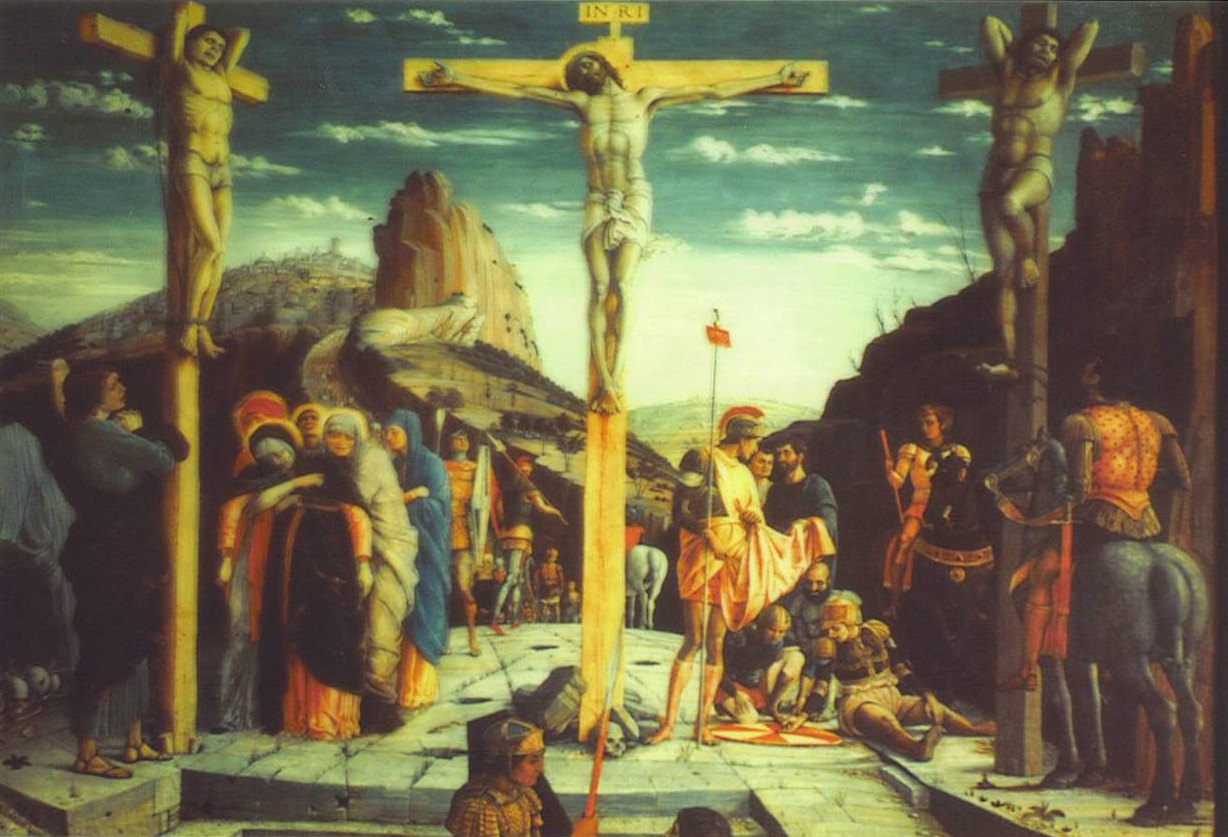16 When the Sabbath was over, Mary Magdalene, Mary the mother of James, and Salome bought spices so that they might go to anoint Jesus’ body. 2 Very early on the first day of the week, just after sunrise, they were on their way to the tomb 3 and they asked each other, “Who will roll the stone away from the entrance of the tomb?”
4 But when they looked up, they saw that the stone, which was very large, had been rolled away. 5 As they entered the tomb, they saw a young man dressed in a white robe sitting on the right side, and they were alarmed.6 “Don’t be alarmed,” he said. “You are looking for Jesus the Nazarene, who was crucified. He has risen! He is not here. See the place where they laid him. 7 But go, tell his disciples and Peter, ‘He is going ahead of you into Galilee. There you will see him, just as he told you.’”
8 Trembling and bewildered, the women went out and fled from the tomb. They said nothing to anyone, because they were afraid.
At dawn on Sunday, the two Marys and Salome go to the tomb to use spices to annoit Jesus body. It is a reminder of the nameless woman who has already annointed Jesus earlier. They see their quest as the best as quixotic as they know they will be unable to open the tomb.
But when they look, they find that the tomb is open, and they will be able to enter it. There they see a young man dressed in white. The man is not identified as an angel in this passage. In fact the other young man identified by Mark is the one who has seen Jesus arrested but left his garment behind. Is this the same person?
Don't be afraid, the women are told. Jesus is gone and there is the empty tomb to prove it. Contrary to much Christian art, the first proof of Jesus resurrection is not a power and light show but a dark empty cave. It is not an unambiguous sign.
The young man continues with a message for the disciples, who have been absent since the garden. And the first disciple mentioned is Peter. Mark has focused on him as the primary example of a clueless disciple. Tell them that Jesus has preceded them to Galilee. They should look for him there rather than in the cemetery. The disiples if they follow these instructions will see Jesus there.
But the women, the only ones who have remained through the ordeal of crucifixion and burial do not respond with joyful celebration. Instead, they flee from the tomb. Instead of telling everyone, they tell no one (although at some point they must have). And the gospel ends with the word "because." Properly translated the last phrase in Mark is "they were afraid because". They seem not to have been much comforted by the young man in white in the tomb.
It is an exceptionally odd ending. To some it has suggested that the end of the book was lost. Other later sources have added verses which sometimes appear after verse 8 in translations. The lack of a birth narrative and the lack of resurrection appearances lead some to suggest that Mark originally circulated as a book and that the front and rear covers were lost.
I like the abrupt ending. In a way, it makes the women's story every reader's story. Now we have heard the story of Jesus life and death and come to the empty tomb. What will we do with the message. The last sentence is like a fill in the blank. They were afraid because _________. Why do we think they were afraid to tell? Why are we afraid to speak and remain silent with the good news?

